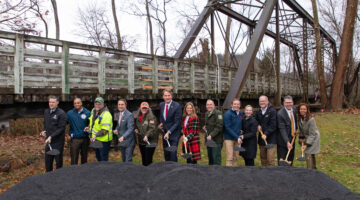The Colorado River Basin, a vital water source for seven U.S. states and Mexico, is facing an unprecedented water crisis due to prolonged drought, climate change and an overallocation of its resources. The situation has reached a critical juncture, necessitating action to address the impending water scarcity and manage its far-reaching consequences.
The crux of the problem lies in the overallocation of the Colorado River’s water resources. The Colorado River Compact of 1922 allocated 7.5 million acre-feet of water annually among the basin states, including California, Arizona, Nevada, Utah, Colorado, New Mexico and Wyoming, as well as allocating a portion to Mexico.
The Law of the River, encompassing the 1922 Compact and subsequent agreements and guidelines, will require changes to account for the realities of water availability and growing water demands. The 2007 Interim Guidelines were an attempt to address some of these needs by introducing more flexible water management practices. However, as the river’s flow continues to experience uncertainty, these measures are proving insufficient.
Major Uses of the Colorado River Water
The situation becomes more taxing as populations and ecosystems that rely on the basin continue to grow. Some of the uses of the Colorado River include:
Drinking Water: The primary and most critical use of the Colorado River is for providing drinking water to urban populations. Major cities such as Los Angeles, San Diego, Phoenix and Las Vegas rely on this water source. As populations grow, so does the demand for reliable drinking water supplies.
Agriculture: Approximately 70% of the Colorado River is used for agriculture. In states like California and Arizona, the river supports vast areas that produce a significant portion of the nation’s fruits, vegetables and nuts. The loss of river water for this purpose could create a drastic food supply and economic hit if more efficient measures are not put into place.
Hydropower: The Colorado River is also a crucial source of hydroelectric power, particularly through the Hoover Dam. This dam generates electricity for millions of people in Nevada, Arizona and California. However, declining water levels threaten the dam’s ability to produce power, with severe implications for the region’s energy security. If the water drops below the dam’s intake pipes, power generation could cease, impacting millions of residents and businesses. The discrepancy between allocated water and supply has also led to a severe depletion of the basin’s reservoirs, including Lake Powell and Lake Mead, which are approaching critically low levels.
Environmental Sustainability: Further south into Mexico where the river empties into the Gulf of California, there is almost no freshwater that meets with the seawater due to the low levels reaching the Gulf. This has led to increasing concerns of brackish water entering the surrounding habitats. Maintaining the right mixture from the river becomes paramount to sustaining a healthy ecosystem, and the wildlife that depend on that ecosystem need a balanced water source to survive.
Managing Water Scarcity: Potential Solutions
To address the pressing issue of water scarcity, there are available solutions, highlighted below that can enhance water efficiency and sustainability.
- Reduced Basin Allocations: In May of 2023, the Upper Basin States, California, Nevada and Arizona, reached agreement to cut their water Basin Allocations from the Colorado River by at least 3 million acre-feet through 2026. These reductions provided interim supply for agricultural uses while managing levels in Lakes Mead and Powell. The Bureau of Reclamation (BOR) will need to establish new operating guidelines after 2026 to manage the forecasted shortages. The draft BOR guidelines are due in December 2024, and issued as final in December 2025.
- Conservation and Efficiency: An effective way to save water is to manage the irrigation process that it is being used in agriculture. From an application standpoint, an example of this would be applying water precisely where it is needed and running the system to match the growing cycle. In addition, for municipal utilities, this could be updating plumbing fixtures to improve efficiency of use. Both options can conserve water and feed into managing the demand cycle.
- Smart metering: Most utilities have robust metering systems that can track demand and monitor where major changes occur. For instance, if there is a plumbing break creating a high-water flow that doesn’t match baseline data, these systems can better troubleshoot where and how to fix the leak to prevent water loss.
- Changing the landscape: Within growing communities, a neighborhood can contribute to water reduction by updating to native landscaping to help eliminate needs for irrigation. Cities located in dry and arid lands can replace grass with landscapes that will eliminate water needs.
- Reuse and Recycling: Implementing advanced water recycling programs can help cities achieve water sustainability. Direct potable reuse (DPR) and indirect potable reuse (IPR), such as the Prairie Waters Potable Reuse System in Colorado, are becoming viable options to augment water supplies and bring water sources to acceptable drinking water standards.
- Diversifying Water Sources: States that use the Colorado River Basin are exploring alternative water sources, such as desalination, stormwater capture, groundwater banking and reuse. These efforts can help reduce reliance on the Colorado River. Efforts to diversify water sources, including the Carlsbad Desalination Plant and the San Fernando Groundwater Remediation Facility, both located in California, provide reliable infrastructure to drought-ridden regions of California.
Innovation By Collaboration
Regardless of any one solution, none are effective alone. Collaboration among all stakeholders, including states, tribes and Mexico, is essential for long-term management and implementation of these strategies. Collaborative governance frameworks can facilitate the sharing of resources, data and strategies to address common challenges.
The future of the Colorado River Basin depends on the willingness of its stakeholders to adapt and innovate. By learning from past experiences and embracing new technologies using a cooperative framework, the region can build toward a resilient water future.
About The Author:
Jim Scholl is Director of Drinking Water at Kiewit. His experience as a senior water solutions consultant spans over 30 years, helping to plan, develop and implement various water infrastructure projects globally.


